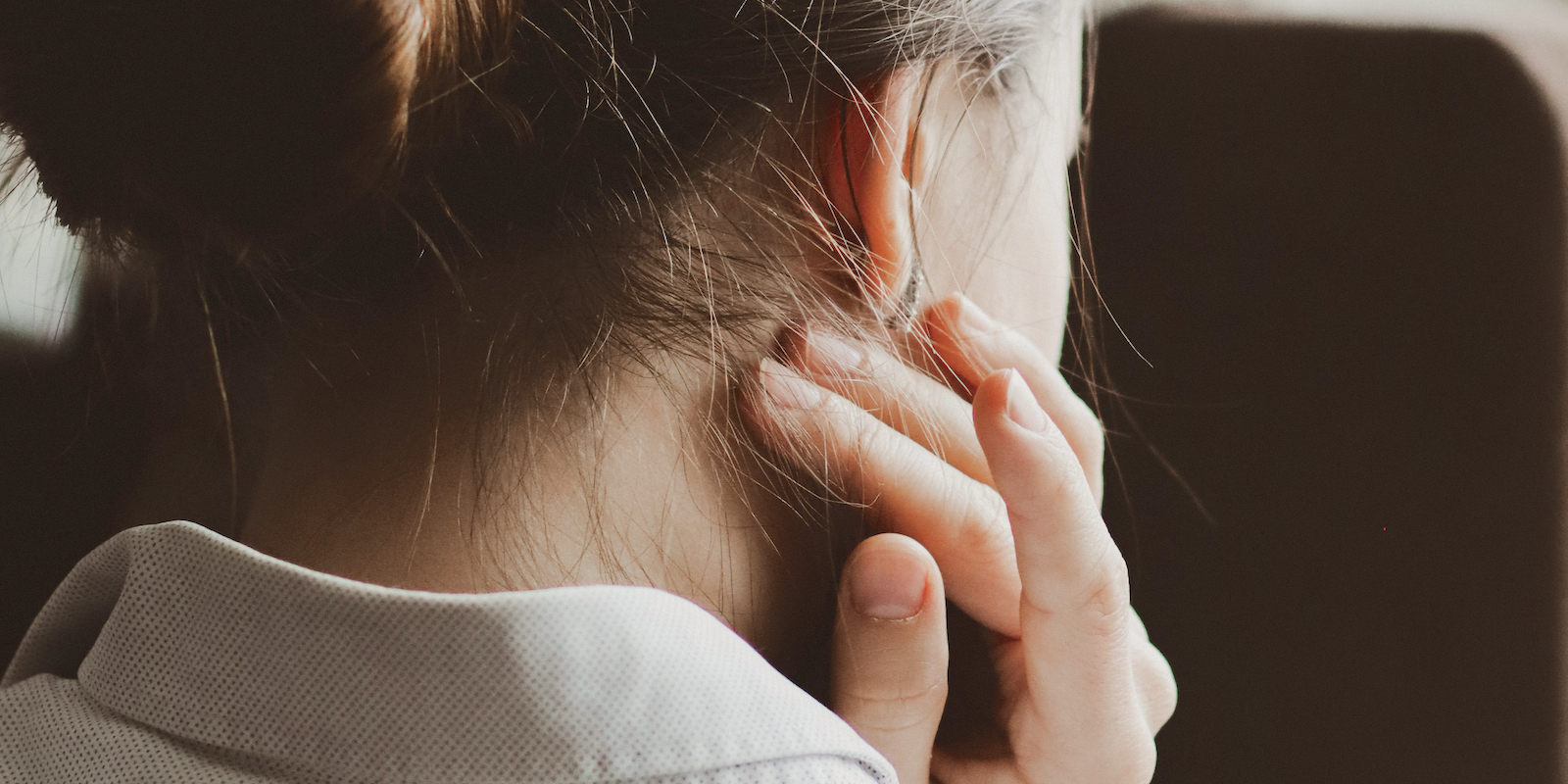Over the last several days, I started to think and reflect. What is it? What is making this time so difficult? Ironically, at the same time, I’m in the final stages of writing my PhD dissertation examining and understanding the Polyvagal theory developed by Dr. Stephen Porges in 1994, and something clicked. So, in this article I will explore the role of the Polyvagal theory in navigating COVID-19.
Megan originally published the following as a talk on Insight Timer. You can listen via this link or by playing the audio below:
- TALK: The Polyvagal Theory & COVID-19: Towards Social Engagement Megan Kirk Chang, PhD 27:08
What Is The Polyvagal Theory?
For those of you that may not be familiar with the Polyvagal theory, I’ll provide a very brief background.
The Story of Fight-or-Flight and Rest-and-Digest
We have an incredible survival mechanism within our body which lives in our primitive brain. This is our autonomic nervous system. It is responsible for the involuntary function of the organs in our body. It keeps our heart beating, our lungs breathing, our digestion moving. Could you imagine actually having to ask your heart to beat or your lungs to breathe? The autonomic nervous system is incredible. It keeps us alive.
Within the autonomic nervous system are two different branches. We have the sympathetic nervous system, commonly known as our fight-or-flight system, and we have the parasympathetic nervous system, known as our rest-and-digest system. These two systems work antagonistically, they work synergistically and they work independently depending on where the nerve fibers are in the body.
Largely, there’s this reciprocal relationship between our sympathetic and parasympathetic systems to keep our body in a balanced equilibrium.
Our fight-or-flight system is what we typically focus on the most. This is our response to danger or threat. An alarm or stimulus may occur and our body mobilizes, becomes activated to fight off or flee the danger. That means our heart rate quickens, our breath increases, our pupils dilate, fresh oxygen gets poured into our skeletal muscles so we can have the energy to fight or flee. On the flip side, when the danger is no longer present, our parasympathetic nervous system kicks in to put the brakes on the sympathetic fight-or-flight system, and that means we return to our heart and our breathing rate to normal values, digestion begins again, and we feel more regulated and calm.
The interesting thing, however, is that when we experience chronic stressors, longtime stress or multiple exposures to shocking or intense traumatic experiences, this system essentially becomes impeded, making it difficult to mobilize us to fight or flee, and that’s where the Polyvagal theory comes in.
Read more: Explore how to trigger the relaxation response of your body.
The Vagus Nerve
Dr. Porges identified that we actually have a second defense strategy over and above our fight-or-flight response which lives in the structures of our vagus nerve.
Our vagus nerve is one of our cranial nerves and one of the longest nerves in the body. Over 75% of our parasympathetic nervous system is made up of the vagus nerve, so it plays an important role.
The vagus nerve also consists of two different branches. We have the dorsal vagal branch and the ventral vagal branch. Briefly, you can think of the dorsal vagal branch as the nerve fibers that innervate organs below the diaphragm, and the ventral vagal branch as the parts of the nerve fibers that innervate organs above the diaphragm. Our dorsal vagal branch is the most primitive and our ventral vagal complex is a more evolved part of mammals that raise and rear their young.
Read more: In another article, Megan Kirk Chang shares four strategies for trauma-informed workplaces during (and eventually after) the COVID-19 pandemic.
The Immobilization Response of the Dorsal Vagal Branch
If we’re experiencing chronic intense stress without the opportunity to move into regulated, calm, balanced state, and our body experiences the stress as being beyond our capacity to cope, our dorsal vagal branch will kick in and move us into a state called “immobilization” or “shut down mode.”
The body senses that the stress exposure is beyond our capacity to fight or flee, and so the parasympathetic nervous system spikes through lots of chemical hormonal neurotransmitter reactions. The result of that is that our heart rate rapidly reduces, known as bradycardia, and our breath rate essentially ceases. We collapse. We go limp. We go numb. We dissociate. We go into shutdown mode.
The immobilization response is very adaptive, because in a way, it makes us less viable to a potential perpetrator. We can classically view it as a mouse caught in the jaws of the cat. Typically, the mouse looks limp and is flopping around feigning death as if it’s not alive. But in reality, this isn’t entirely true. The mouse might currently be in dorsal vagal shutdown, and this is an adoptive response for two reasons.
- One, if the cat senses that the mouse is in fact dead, it may loosen its grip, or it may even set the mouse down to go search out more food, giving the mouse an opportunity to get out of the dangerous situation.
- Two, if death is imminent for the mouse and the cat will eat the mouse, this dorsal vagal shutdown state helps the mouse actually dissociate from the sensory and psychological harm of going through death.
We have this exact same system in our body.
If we find ourselves caught in a dangerous situation that we can’t get out of, whether we’re restrained or it’s chronic over a long period of time, the body has this incredible ability to dissociate, to separate from the body as an adaptive response so that we don’t expose ourselves to the sensory overload or psychological harm of the experience.
Now, for anyone that is reading that has gone through immobilization, this can be extremely confusing, challenging, uncomfortable, because sometimes we often blame ourselves for not being able to be “strong enough to flee the danger”, and we add all of this cognition to our experience, the meaning, the judgment, the criticism. Yet our immobilization response is not something that you consciously choose. It’s your body’s way of working for you and it’s interpreted that the situation you’re in is beyond your capacity to fight or flee off. It works for you automatically.
The Safety Mechanism of Ventral Vagal Branch: Feeling Safe in the Presence of Others
Just like the fight-or-flight response and the rest-and-digest response, our immobilization response does have a safety mechanism as well. It is known as our social engagement system.
Dr. Porges identified that we have the ventral vagal complex that innervates the organs and tissues above the diaphragm, such as our larynx and vocal chords, our eyes, our inner ear, the striated muscles in the face. Our social engagement system is an evolved system that contributes to our sense of safety. This sense of safety is really in the presence of other people. We look to other people for cues of safety in their face, in their tone of voice. An example of our social engagement system is a mother singing a soft lullaby to her crying baby. The tone of the mother’s voice will signal cues to the baby that they’re safe.
As adults, we learn to assess whether an individual is safe to approach or not through various nonverbal cues, such as their eye contact, the facial expression on their face and their tone of voice.
Immobilization vs Social Engagament Response
When somebody is in the immobilization response, they are not in the social engagement response. This might look like a sense of lifelessness behind the eyes. This might look like a lack of facial expression or a flat affect. If you’re in shutdown mode, you’re unable to hear the voice of somebody who’s safe to you and all of the noise and your surroundings might get confusing.
As human beings, we are built and hardwired for connection, safety and belonging with one another, and so if you’ve experienced this dorsal vagal shutdown experience, particularly multiple times or across childhood, the strength of your social engagement system might be compromised.
The Polyvagal Theory and the Coronavirus Pandemic: How The Social Engagement Response Has Been Collectively Declining
The good news is that there are ways to reestablish and strengthen our ventral vagal social engagement system. So linking this Polyvagal theory to COVID-19, I can’t help but feel that our cues of safety in the presence of one another are being completely blunted right now. For example, when you go to the grocery store and everyone’s in a face covering or a mask, it’s very difficult to actually see and interpret the facial expression and sense of safety with somebody else. It’s a double-edged sword because on the one hand, protecting ourselves and wearing PPE equipment is necessary right now, but on the other hand, really thinking about how does this impact our sense of safety is a question is what I’ve been wondering.
In addition, with our digital space, we are now more than ever connecting with family and work colleagues over virtual platforms, and the interesting thing is that we’re not actually looking into each other’s eyes. We might be looking at the person’s eyes on the screen, but there isn’t the reciprocal feedback that you are connected through eye contact, yet another important component of our sense of safety. With the face coverings and PPE, the voice of an individual might be muffled. We can’t see the mouth move, we can’t see the articulation and we can’t see the subtle cues of, “I’m with you right now. I hear you.”
I personally believe that collectively across the globe, our social engagement system is slowly, bit by bit, being completely eradicated, and I believe this is what is leading to the spike in stress, the spike in the shutdown mode, the spike in aggressive outbursts, impulsive reactive behaviors.
How To Improve Your Social Engagement Response & Return To A Sense Of Collective Safety
The question remains, how do we, in the face of the pandemic, continue to maintain, sustain, or build our social engagement system?
Now more than ever, we need to be paying attention to our nonverbal cues. If you find yourself out and about having to wear a mask, it’s essential that you use what you can to communicate, “I’m a safe person. I’m approachable.” That could mean raising the eyebrows. That could mean over-emphasizing your smile through the eyes. That could mean a conscious effort to look people in the eye. It could mean increasing the volume of your voice, not the intensity of your tone, to express clearly through your tone of voice that it’s safe to talk to you. It could mean sitting with your posture and moving towards a more open, approachable posture, which means the chin is lifted, the shoulders are back, the arms might be expanded. When we’re in that dorsal vagal state, our posture is usually collapse, our shoulders shrug inwards, the chin is tucked. We usually look downwards wanting to be invisible and small, and so it’s really important that you model this behavior for your family, for your students, for your community.
Another suggestion that is very simple is the random act of kindness of simply asking, “How are you doing?”, acknowledging the difficulty of the current times we find ourselves in and reaching out in any way you can to say, “Hey, I know this is hard right now. I’m thinking of you. I hope you’re all right. How are you?”
Read more: In this article, meditation teacher Manoj Dias explains how to the essence of the Buddhist story of the Metta Sutta helps to strengthen friendships in the age of isolation.
Another option to return yourself to a sense of safety is remembering that the only relationship that you have for your entire life is the one with yourself, and so spending time with yourself, connecting whether it’s through mindfulness, whether it’s through your favorite activity, whether it’s through play or creativity. We can learn so much from our younger generation about becoming immersed in play and self-expression.
With my own clients, I always ask the question, “What are you doing that makes you feel most alive?” Or, “What was it that you did as a child because you loved it so much?” and lots of beautiful answers have come from this, from singing to dancing, to woodworking, to working on cars, to hikes in the forest, baking, playing a sport, spending time with pets, so many beautiful answers, and when I follow up and say, “When was the last time you did that?” Often the response is, “Oh, I don’t do that anymore.” Or, “I don’t have time for that.”
If we’re going to get through this next phase of the pandemic, I think it is really important that we reestablish a sense of creativity and self-expression with ourselves. I know this doesn’t happen overnight and lots of obligations and changes might get in the way of this, but it starts with one more moment than the day before.
With that in mind, I thought I would end with a very short, connected practice where we can connect with ourselves just for a few moments. If you like, you can sit back and play the short audio meditation below:
- Heart Connection Meditation Megan Kirk Chang, PhD 6:06







